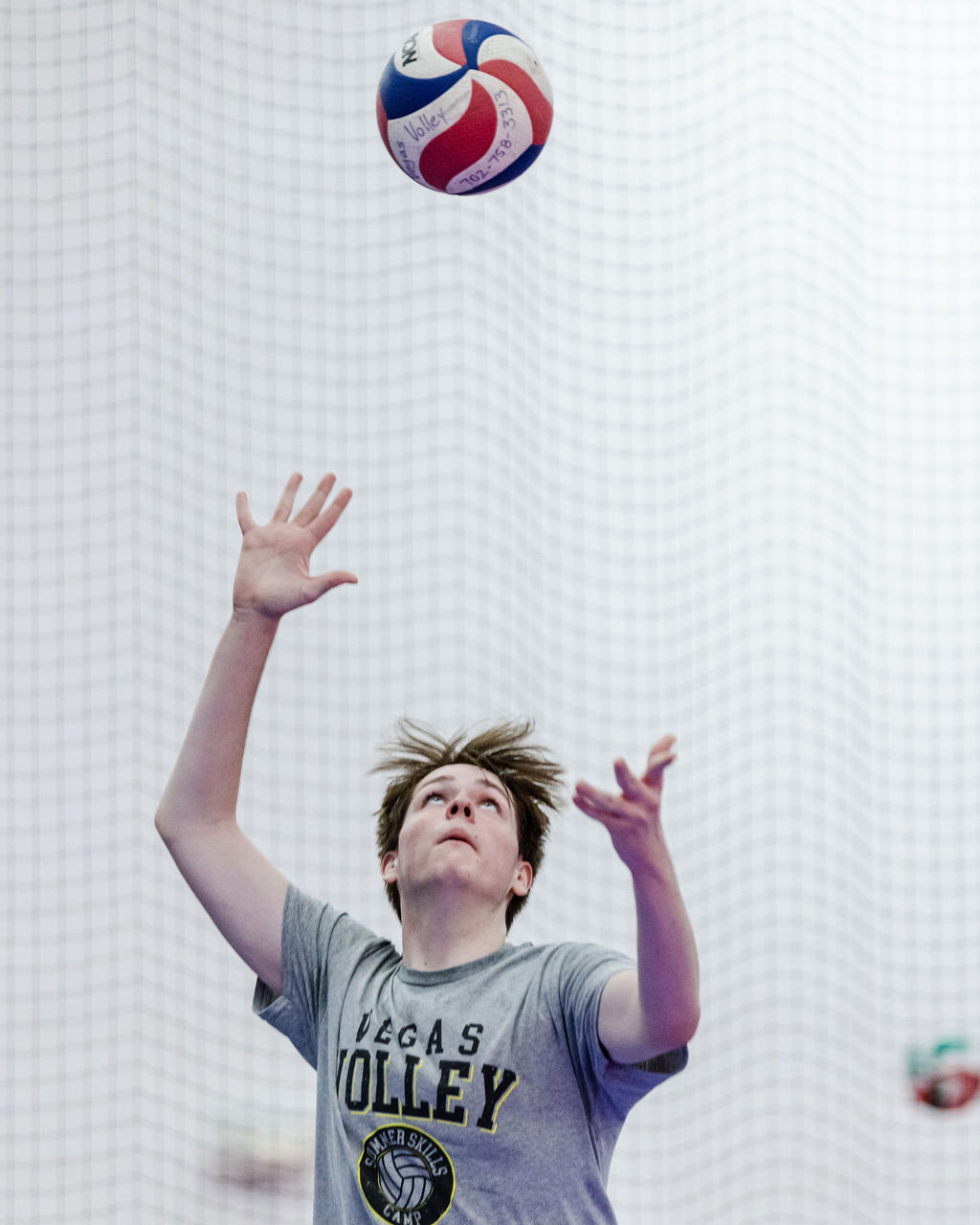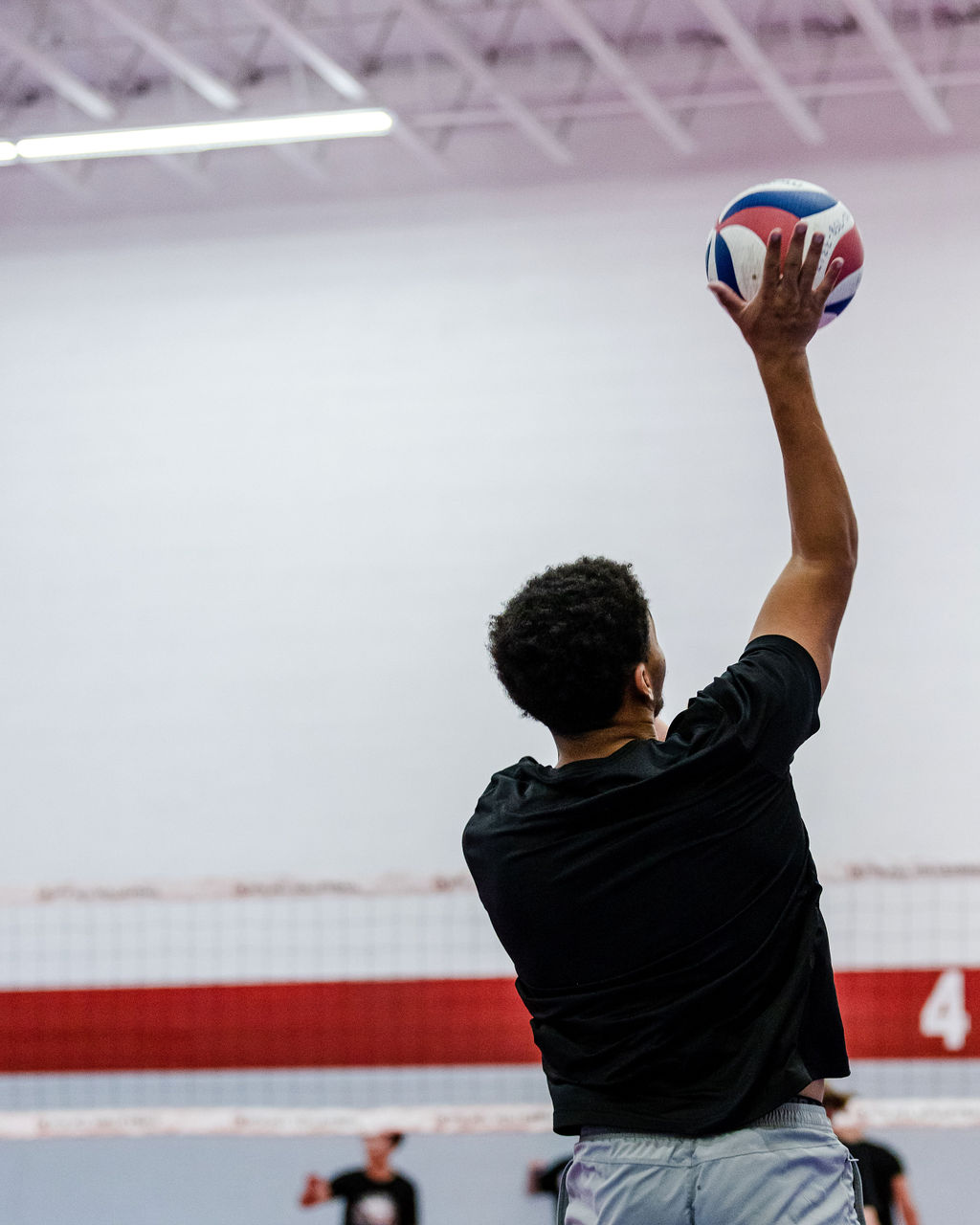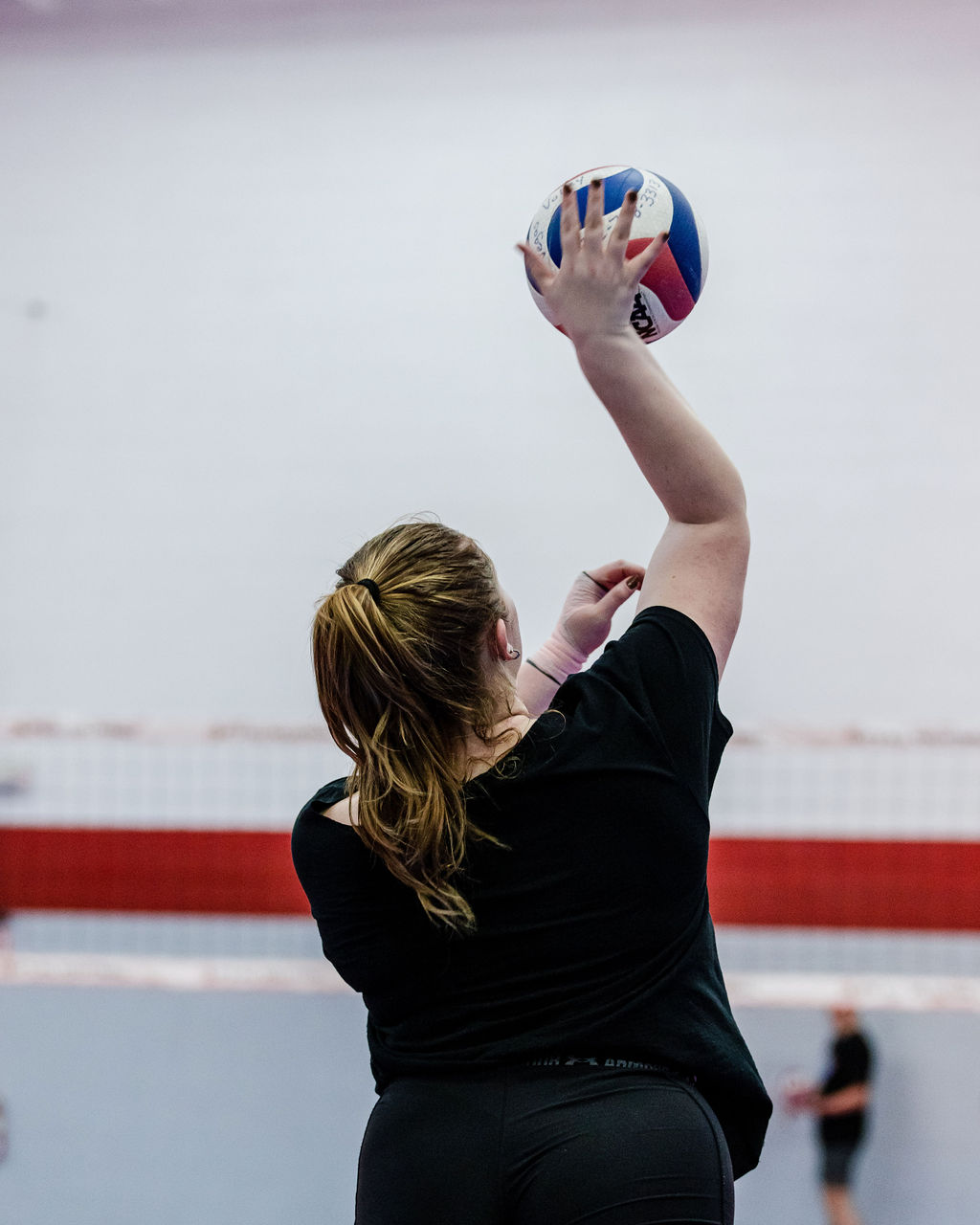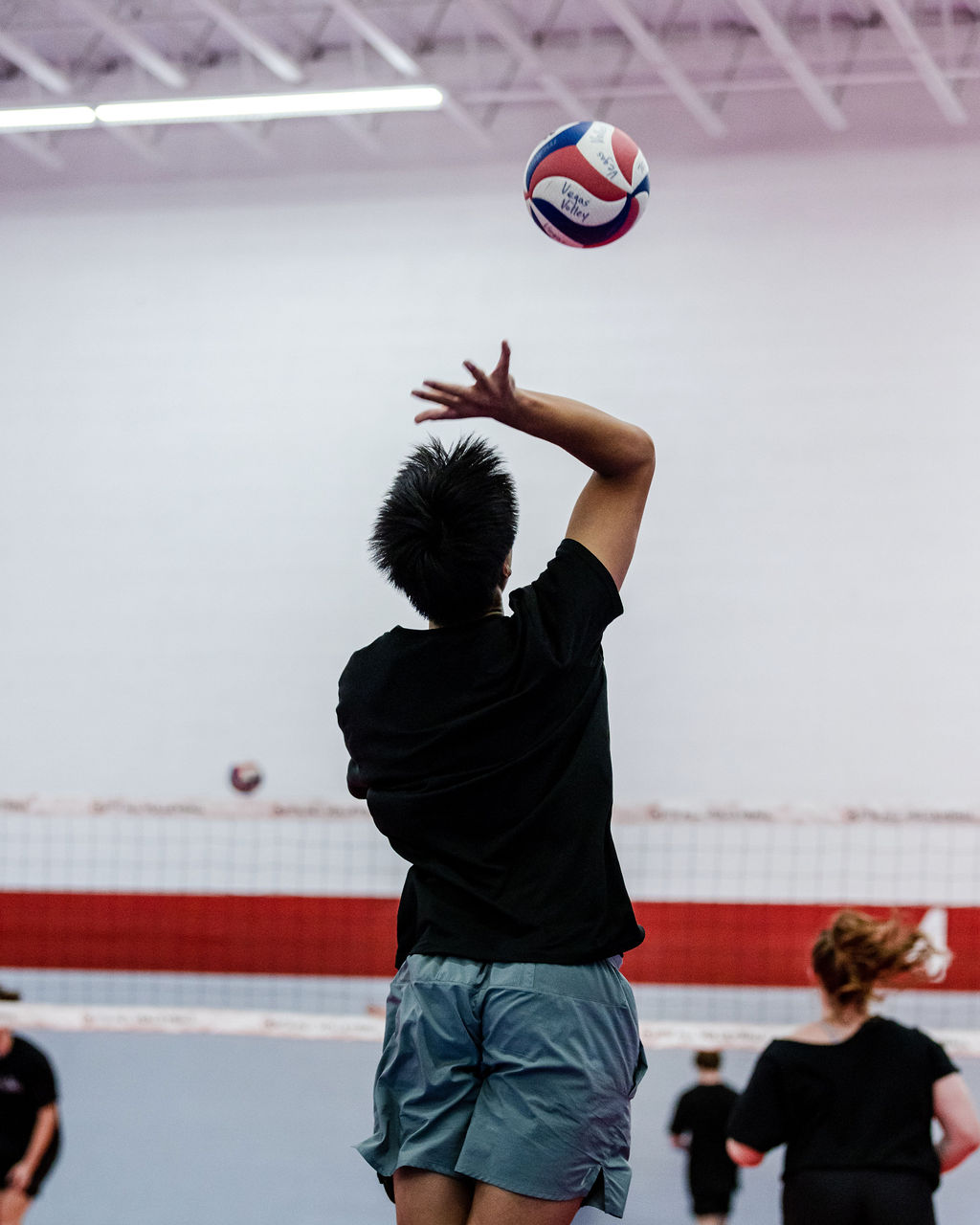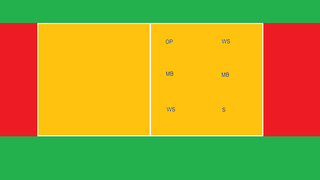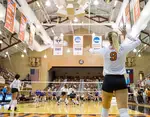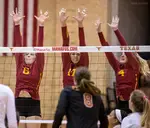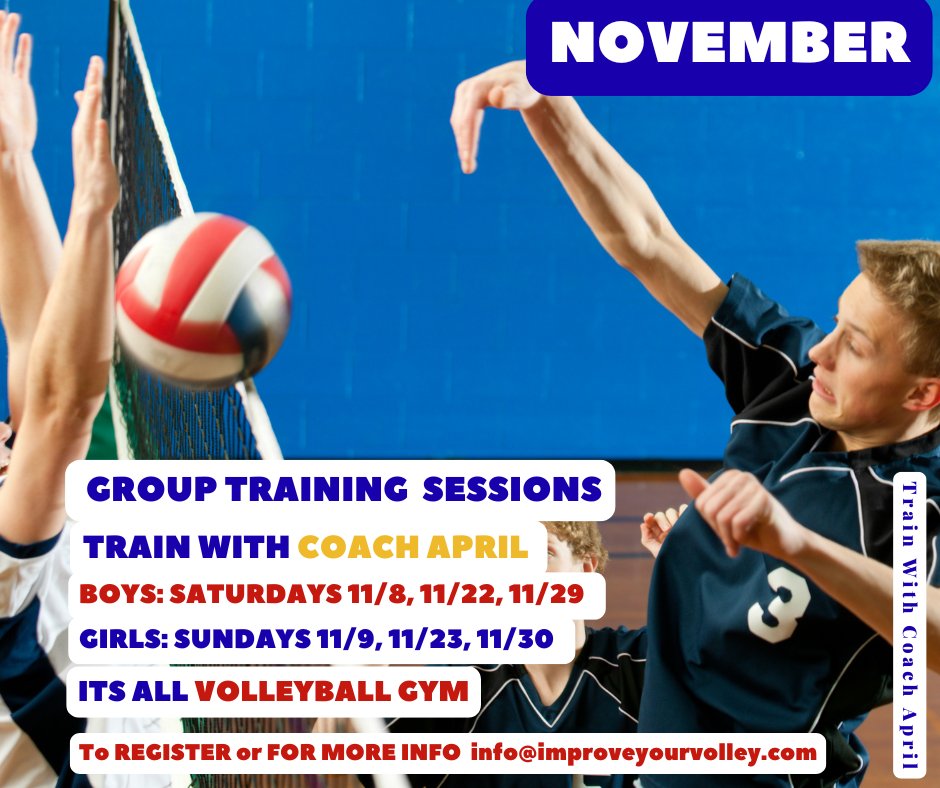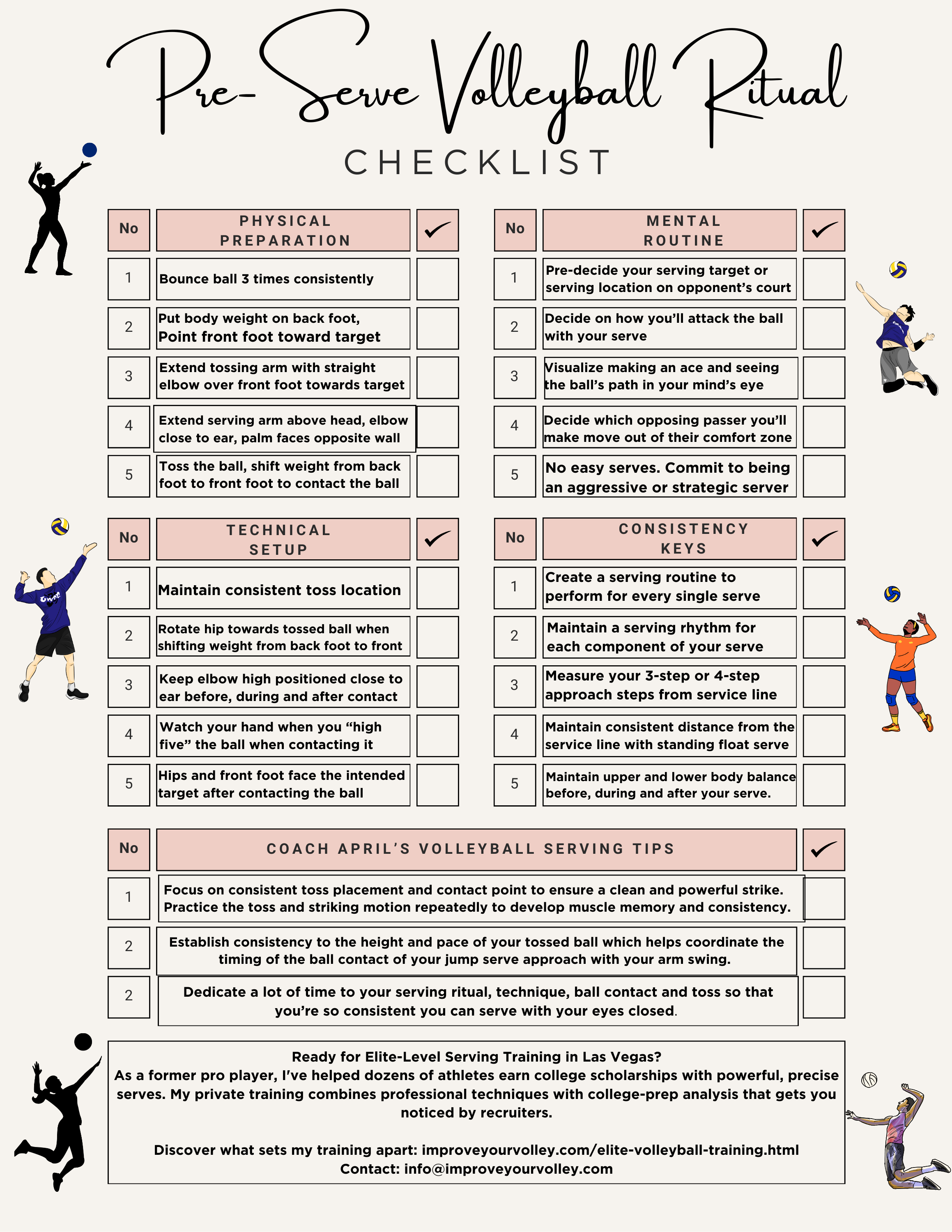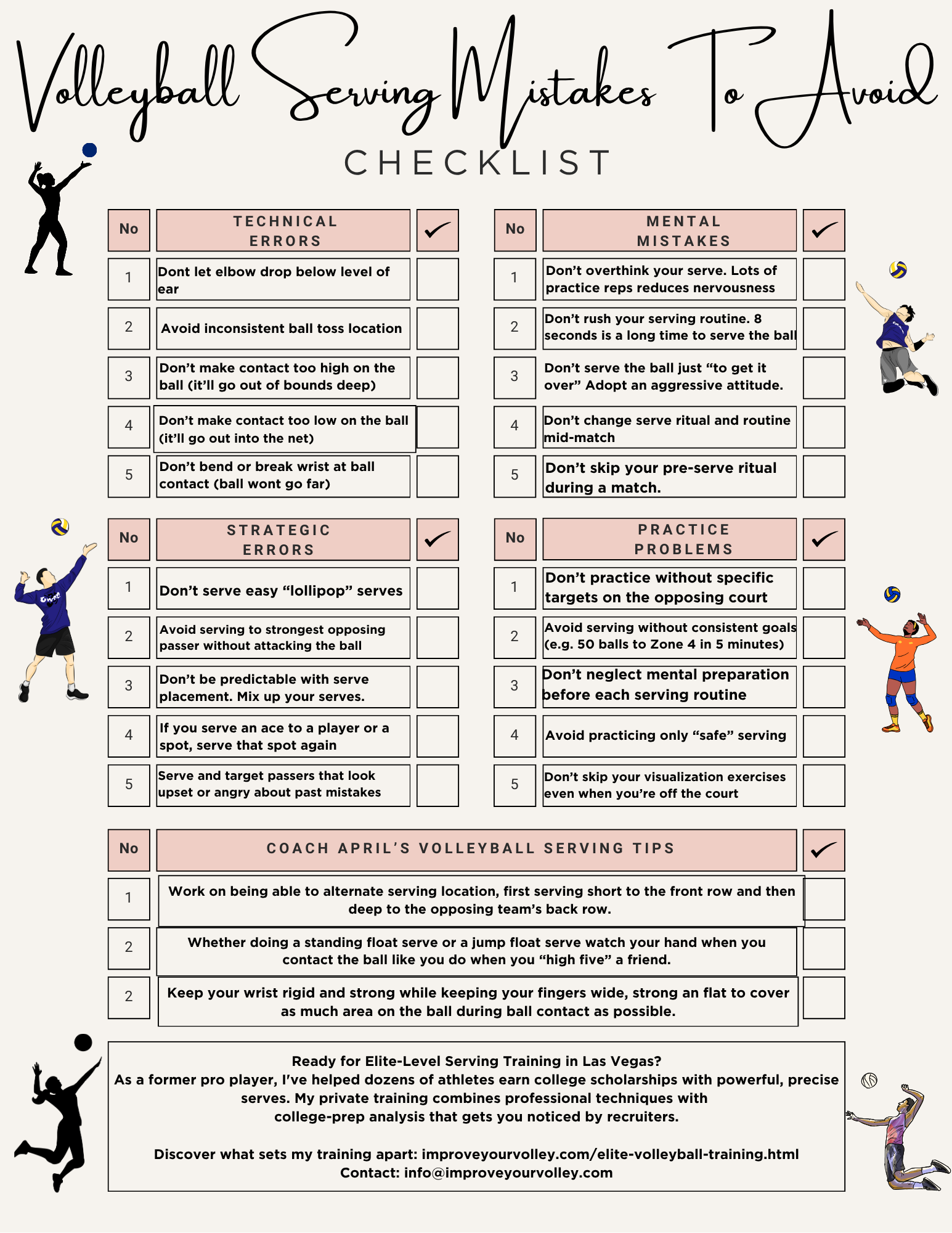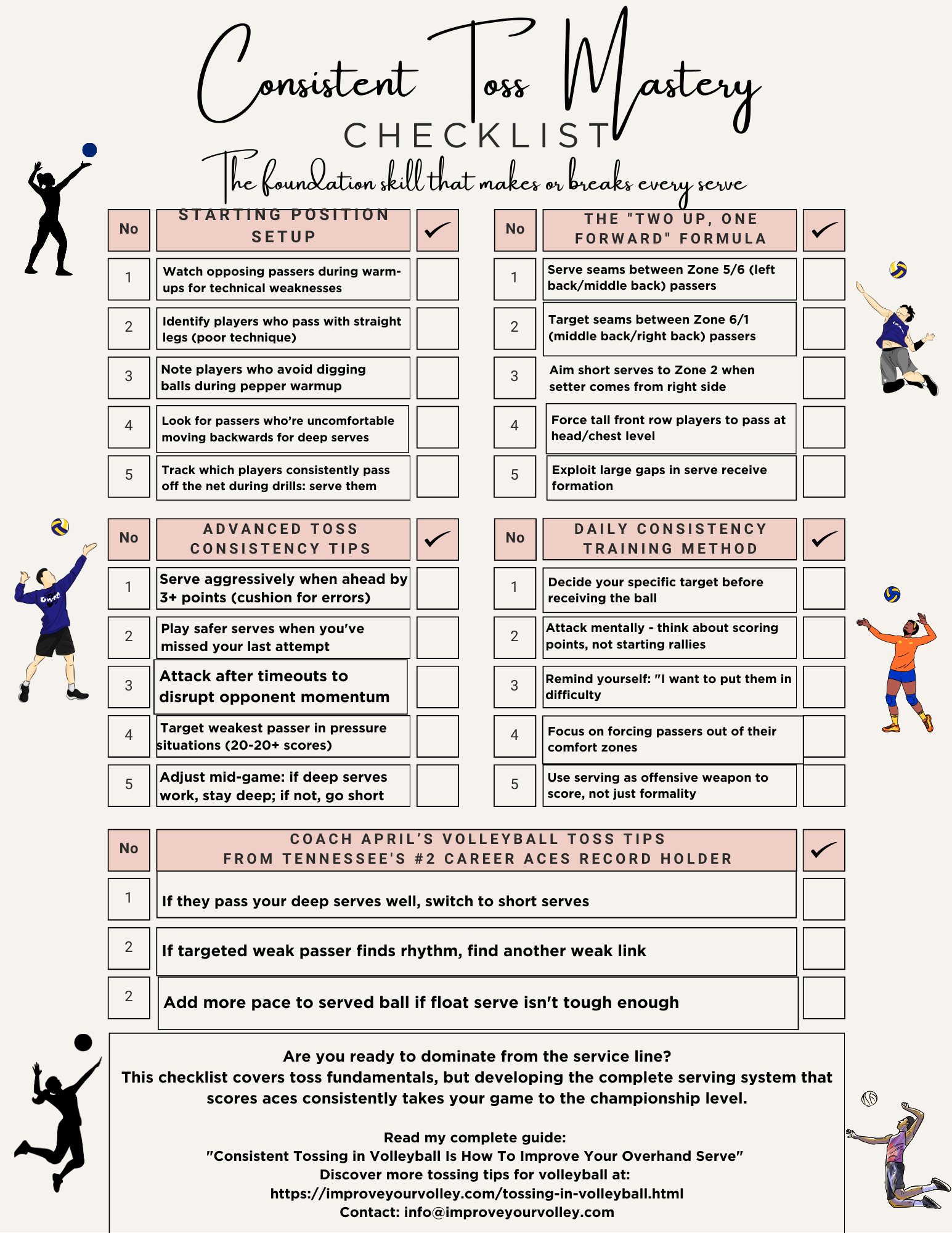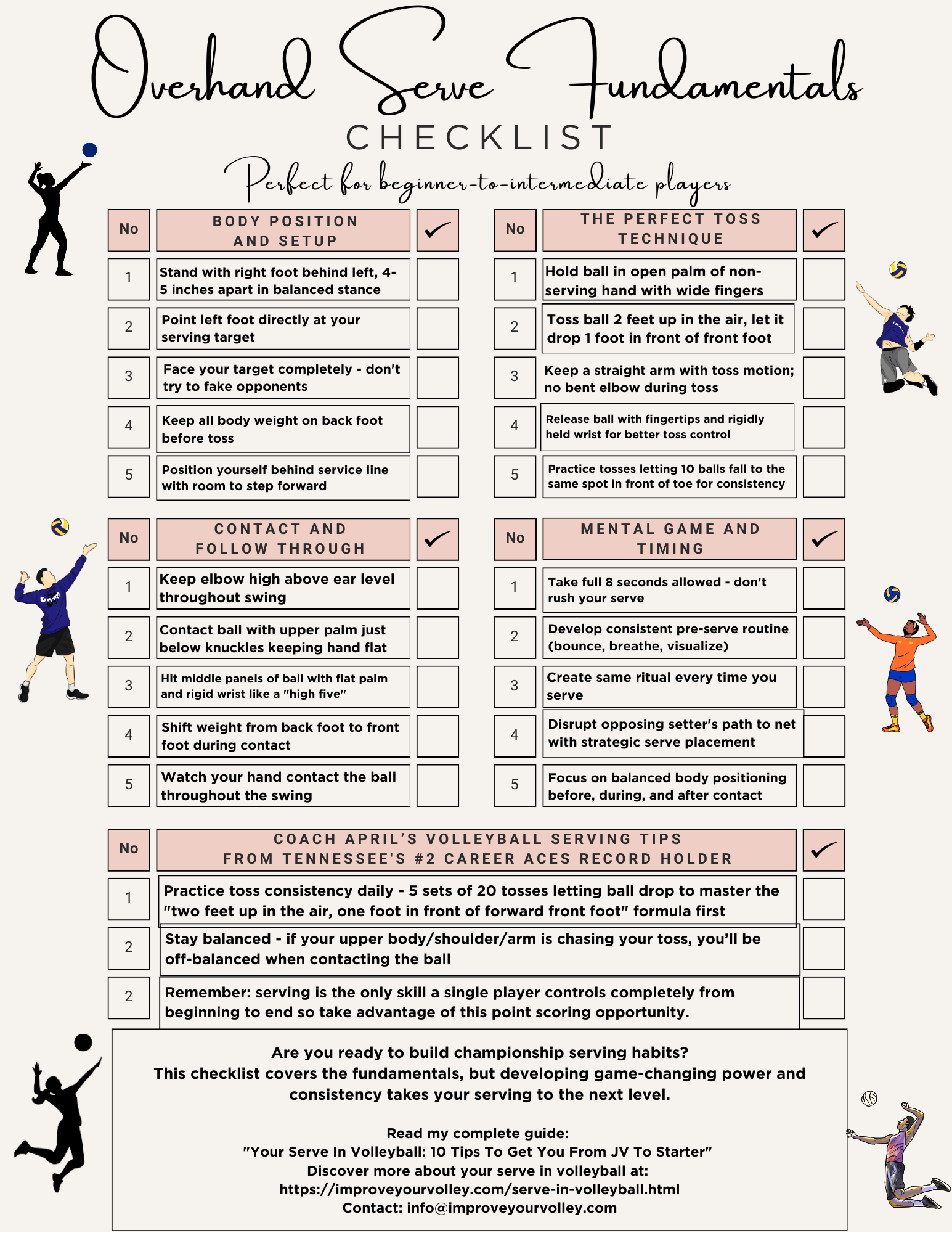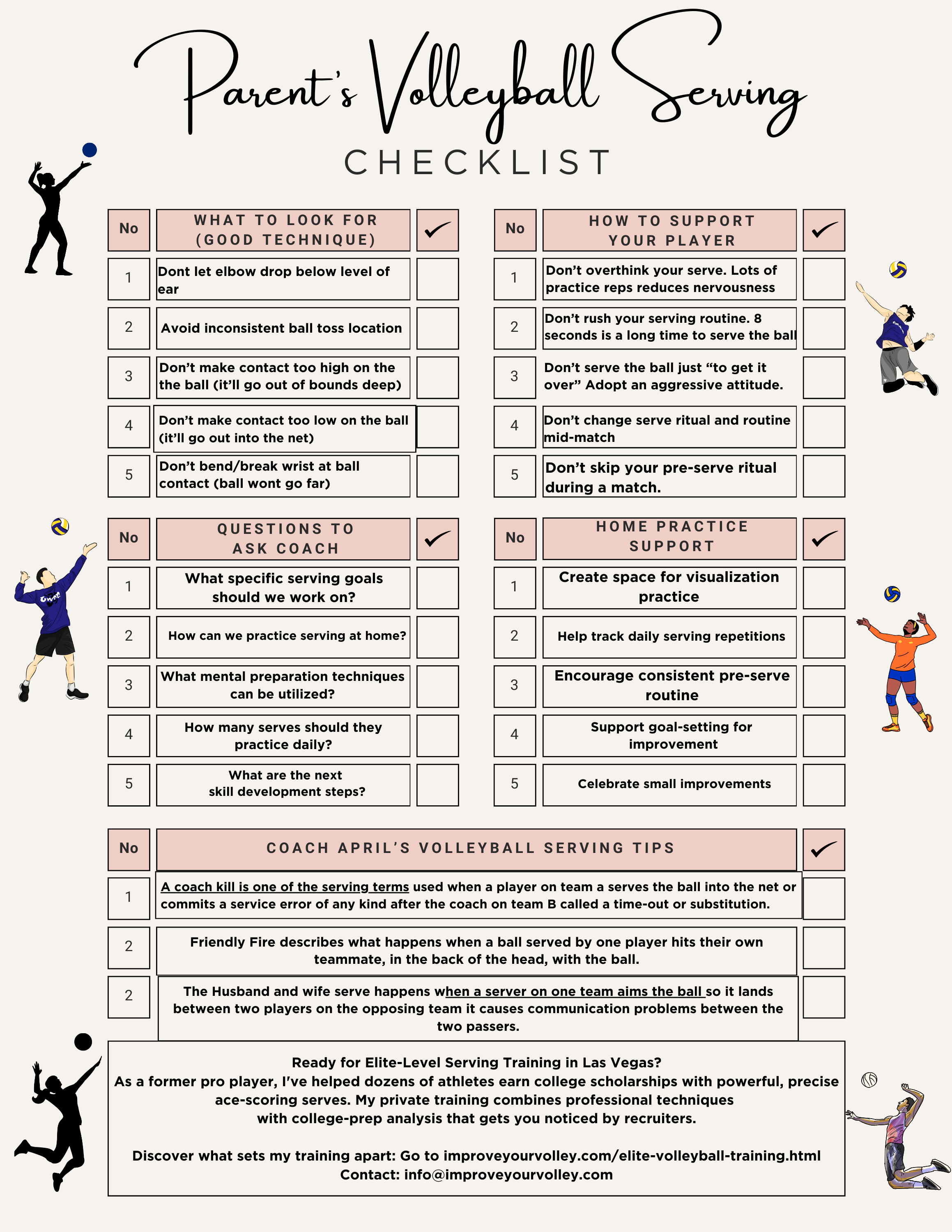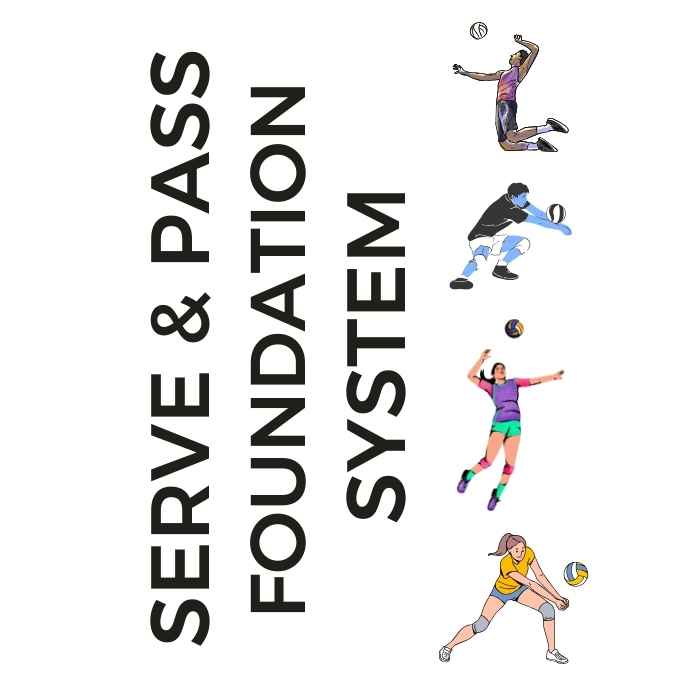
Serve + Pass Foundation System: The Complete Skills Arsenal The two-skill mastery system that transforms inconsistent players into the athletes coaches build their lineups around. Stop Struggling With The Two Most Important Skills In Volleyball!
- Improve Your Volleyball with Coach April
- Volleyball Game Rules: Serving, Score,
- 8 Serve Rules You Should Know
8 Volleyball Serve Rules on The Toss and When and Where You Can Serve
Learn the rules of serving along with the most common fouls and service faults committed in competition.
According to the volleyball serving rules each rally begins with the serve.
This makes the serve the first opportunity for a player to score a point.
Long-time private client Syd Wilkes in high school working on her float serve with me.
Years later after graduating and attending Seattle University Syd is now playing for Niagara University and still comes to train with me during the summer to prep for each college season
Start with the foundation - grab my step-by-step serving checklist used by my private training clients.
Volleyball Serve Rules About The Toss
When you look at my players you'll see (or should see) that all of them have the same serving form and technique. We work hard on -
- keeping the elbow close to the ear
- watching their hand when they contact the ball
- watch how their hips are facing where they want to serve the ball (we were working on serving line to zone 5)
- all of them are or will contact the ball at the same spot on the ball, so the upper part of the palm just below the knuckles contact the middle panels of the ball
- working on a consistent toss on every serve so I know exactly where to contact the ball
No matter your serving style, the toss is a fundamental part of the serve in volleyball.
You can't serve a ball without tossing it up in some way, shape or form.
- With that being the case, the volleyball serve rules state that when you serve, only one toss is allowed once the referee has blown their whistle.Once a player tosses the ball up for their serve, if they catch the ball without completing their service action, that is a fault and the referee will blow their whistle and award the opposing team the ball.
Addi works on her jump float serve toss consistency while aiming for a deep line serve to Zone 5.
If you are a server and you realize you've given yourself a bad toss, according to volleyball serve rules you can let the tossed ball drop.
Once the ball drops, you can catch the ball.
After its been dropped, the referee will blow their whistle indicating that the complete service action will begin again and will give you, the server a second opportunity to serve within 5 seconds time .
- Not only does the server need to let the ball drop in order to reset their five seconds to serve again, but the ball needs to drop to the floor without touching any of the server's body parts on the way down.
Many times a server will toss a ball up to serve it and then can't get out of the way fast enough before the tossed ball hits them on the way down.
If this happens, then the referee will blow their whistle and award the ball to the opposing team.
Don't you hate when that happens?
Now that you know what the volleyball serve rules are - grab my step-by-step advanced passing checklist used by my private training clients.
Volleyball Serve Rules:
Can A Player Serve From Anywhere on the Court?
During my Breakfast Club for College Players summer training for college players in Vegas home for the summer we work on partner jump float serving technique where two servers at a time in two different lines serve behind Zone 1 and Zone 5 to a designated spot on the opposing court.
Pairs work together to get the ball "in" and if one player in the serving pair misses their serve neither of the two score a point for their team.
So no point for the two people serving and no point for the team they represent so the pressure feels like its double the weight.
The more we do this drill the more the server feels the weight of making their serve in.
- The service action has to take place within the service zone of each team's court.
The service zone is parallel to the endlines and centerlines of the court and is located behind the end line on each team's court.
- The endline is also referred to as the "service line" when the team on defense is serving.
The service line is the line a player cannot touch or step over while in the act of serving the ball over the net.
(See the area in red in the diagram.)
- If the player touches the line while serving this is considered a fault, and the referee will blow their whistle and then award the opposing team the ball if such an action occurs.
- The server can serve the ball from anywhere behind the service line within that 29 foot 6 inch area marked as the service zone.
Volleyball Serve Rules
When Can A Player Serve The Ball?
Volleyball Serving Drills: Addi, Piper and Hadley Working on their Jump Float Serve To Chairs for Accuracy and Points during semiprivate training with me
Once a player is ready to serve, they are standing in their team's service zone and they must wait for the referee to blow the whistle before beginning any service playing action.
The server has 8 seconds from when the referee blows the whistle to complete their service action, whether they choose to use an under hand serve, overhand serve or jump serve and to get the ball over the net and into the opposing court to start the rally.
They must start their pre-serve routine and contact the ball behind their service line within that red zone and cannot enter the court until after they've contacted the ball.
Want to support your daughter's development at home? My complete training system gives parents the tools to help between practices.
More Volleyball Serve Rules
What team gets to serve first? And how are they chosen?
- At a certain time before the start of a match, usually 10 - 15 minutes before the start, the head official called "the head referee" will whistle for the team captains from each team to meet at the net. They will shake hands and introduce themselves. The official is responsible for setting the ground rules for the match. This will include explaining to both captains the playing areas of the court, overhead obstructions and court surroundings.
Once finished the referee will produce a coin and ask one of the team captains "who wants to choose?" and then will ask "what do they want "heads" or "tails"?.
The team captain who wins the toss will choose either "side" or "serve".
If they pick "serve" then they will be "awarded" the opportunity to serve first during the first set of the match.
For the subsequent sets, teams will alternate who serves first. So if Team A won the coin toss and served first the first set, then Team B will automatically begin the second set with the serve.
If a server does not hear the whistle and serves the ball they will have to re-serve the ball. The service cannot start a rally without the referee first blowing their whistle to indicate the service can begin.
Volleyball Serve Rules:
Where Do You Go From Here?
Where do you need to go now?
Your three options are:
- You can learn more about the Rules of Volleyball by visiting the related links below.
- Follow the suggested reading on our Sitemap page Learning How To Play (Sitemap)
- Or visit the pages in the How to Play Volleyball section in the drop down menu at the top of the page to get started.
If your athlete struggles with consistent serve receive, gets subbed out, or is overlooked for playing time—this is the fix you’ve been looking for.

Struggling with passing consistency?
I help talented passers tired of getting pulled from games because of inconsistent serve receive skills BUILD passing confidence without expensive private lessons using the same 3-step system that's helped dozens of my athletes get recruited.
Download my eBook for $17.99 and start building the passing confidence that keeps you on the court—and gets you seen by college coaches.
From Lady Vol to Legend: Coach April Produces Powerful Passionate Players...is that you?
What Are You Looking For?
Click to Download Your Pre Serving Ritual Mastery Checklist pdf:
🎯Volleyball Pre Serving Ritual Guide -
Players! Learn How To Transform Your Serve from Weak to Weapon
Click to Download Your Parent's Volleyball Serving Checklist pdf
🎯Parent's Volleyball Serving Checklist Guide
Parents! Help Your Player Develop Championship Serves (Even If You've Never Played)

Hi there!
Thanks for stopping by. Hope you learned something today that will help you reach your volleyball goals.
Be sure to subscribe to my email newsletter so you can learn more each week!
Stay strong! Stay motivated!
-Coach April

SUSCRIBE to my email newsletter below!
 Click to learn more about the weekly volleyball classes and clinics or email info@imrpoveyourvolley.com for information
Click to learn more about the weekly volleyball classes and clinics or email info@imrpoveyourvolley.com for informationCongratulations to my seven Boys-18s Vegas Volley club players who played in two state championship finals yesterday, the 3A and 5A State champinship finals at Sunrise Mountain High School.
TOURNAMENT CHAMPIONS!
A-1 Vegas Volley VBC
In It To Win It Tournament
May 2 - 4, 2025 Tournament
Gold Medalists
18s Premier Division
Vegas Volleyball's Unsung Heroes: Celebrating Moms with Peace Love Volleyball Shirts
Ready to energize your volleyball mom journey?
Subscribe to my 'Producing Powerful Passionate Peaceful Players' email list above on ImproveYourVolley.com.
You'll receive energy-boosting tips, exclusive insights from me, Coach April Chapple on maintaining momentum in volleyball.
Let's power up the Vegas volleyball scene together!
Recent Articles
-
5 Essential Serving Tips from Tennessee's #2 Career Aces Record Holder
Dec 09, 25 11:39 PM
I've identified the 5 essential serving tips that separate confident servers from struggling ones and you'll serve with the confidence that creates aces -
The Volleyball Toss How Consistent Is Your Ball Toss Before You Serve?
Dec 07, 25 12:29 AM
The volleyball toss for the overhand serve needs to consistently be two feet up in the air and one foot in front of front foot which puts the ball in front of your serving arm. -
Shop Small: Real Volleyball Training With + Results From A Real Coach
Dec 03, 25 10:30 AM
Support a woman-owned business. Get training from a former elite pro with 13+ years coaching experience. Ditch the big box store--invest in proven results.

